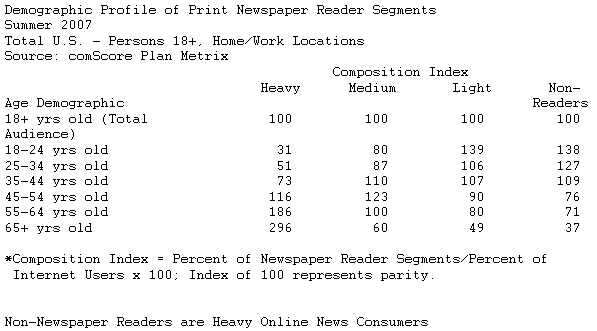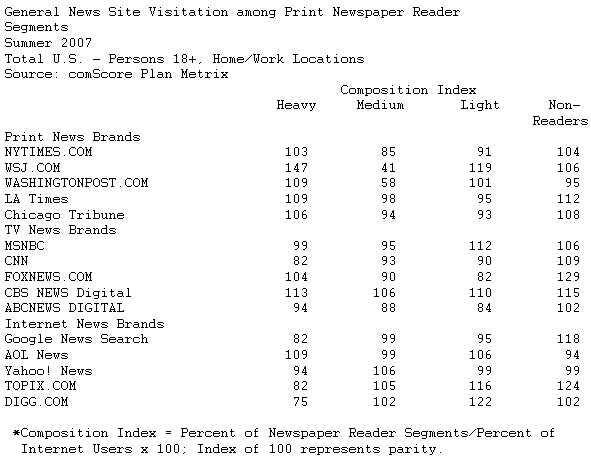Younger News Consumers Less Likely to Read Print Newspapers
Heavy print newspaper readers show a strong skew towards older age segments, while the non-newspaper reader segments skew younger. Those age 65 and older are nearly 3 times more likely (index of 296) than average to read the print edition of newspapers 6 times per week, while those age 18-24 are 38 percent more likely than average to not read a print newspaper at all during a typical week.

In order to better understand the news consumption habits of these heavy medium, light and non-print newspaper reader segments, comScore looked at their relative propensity to visit several key news sources online, using a selection of key print, TV, and Internet news brands.
Several key takeaways emerged from this study. First, it is clear that based on their heavier than average visitation across most key news sites, those who do not read print versions of newspapers are not necessarily light news consumers. In fact, they show a high propensity to visit the majority of sites studies, including print (e.g. LA Times), TV (e.g. FoxNews.com), and Internet (e.g. Topix.com) brands.
Secondly, both the heavy print newspaper readers and the non-readers show similarly heavy consumption of print news brands online, which suggests that print news sites are not merely an extension of their offline brands but have a stand-alone brand presence in the online world. For example, the Web sites for three of the largest U.S. city newspapers -- the New York Times, LA Times and Chicago Tribune -- show above average visitation from both heavy newspaper readers and non-readers.
Finally, TV news brands are also heavily visited by non-print newspaper readers, underscoring the importance of sight, sound and motion to the digital news experience. Non-readers were 29 percent more likely than the average Internet user to visit FoxNews.com and 15 percent more likely to visit CBS News Digital.

"Non-newspaper readers are a particularly important segment to reach because they are heavier than average news consumers -- they just prefer to consume it in a digital format," continued Flanagan. "That they are receptive to print, TV, and Internet news brands indicates a broad opportunity online, but the brands that will ultimately win over these key news consumers are the ones that successfully integrate cutting edge digital content with high quality journalism."





